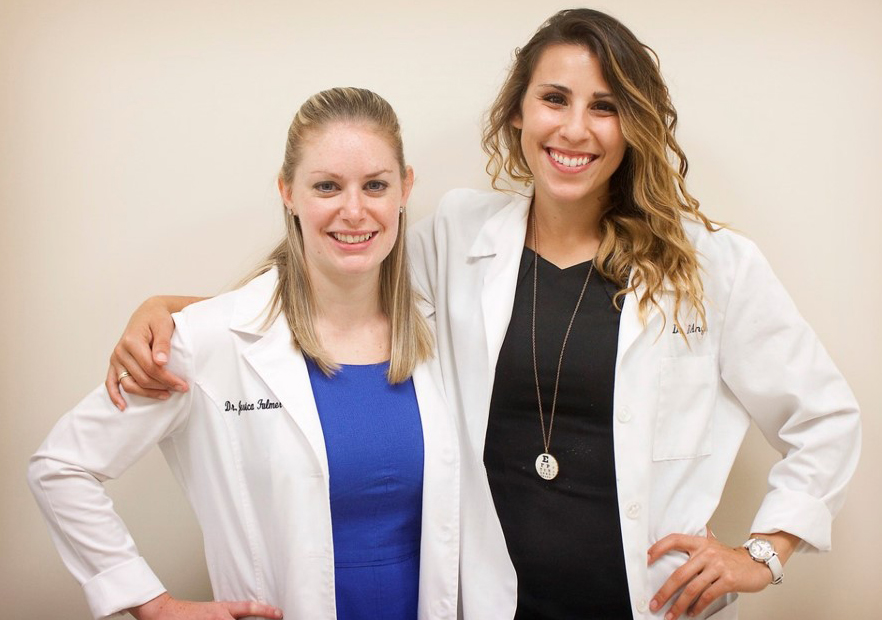By Miki Lyn Zilnicki, OD, FCOVD,
and Jessica Licausi, OD, FAAO, FCOVD

March 3, 2021
COVID-19 continues to challenge us to make adjustments in how we serve patients. Fortunately, there are ways the pandemic has changed our perspective and approach as practitioners for the better. Here are the positive long-term transformations in our vision therapy-focused practice triggered by the pandemic.
Creating New Ways to Connect with Patients
We get so much fulfillment from patient care that we felt the loss of that in-person care during the pandemic. We quickly changed our outlook and searched for creative new ways to connect with our patients beyond the typical, in-office care we were used to providing. We ramped up working on episodes of our podcast: “Vision is More than 20/20,” which is aimed at educating the community on all aspects of the visual system. This enabled us to connect with patients and still achieve a patient education experience.
Additionally, we have focused on creating more online digital patient education content through our our practice Instagram and Facebook accounts and practice website. This has served as a way to build our reach and give us fulfillment in helping people learn about their visual systems and how important visual health is.
Telemedicine Appointments Prior to In-Person Appointments
We have shifted to getting demographic and case histories from patients prior to exams. We require all patients who are scheduled for vision therapy and rehabilitation evaluations to have a telemedicine appointment prior to their exam. This allows us to spend time delving deep into their history, and then on the day of the exam, we can efficiently and effectively examine the patient. Prior to the pandemic, additional appointments were often met with resistance, but now patients value limiting their appointment time in-office and appreciate that their safety is our highest concern.
Doubling Down on Personalized Patient Care
Personalized attention has always been a cornerstone of our patient experience, and is such an important way to make patients feel comfortable and keep them returning for care. Having fewer patients in the office at a time gives you a chance to optimize the time a patient is in your exam chair.
The pandemic solidified that our practice model of less patients (and less insurance) with more quality care is the more sustainable way to build a practice. We were unsure when we were reopening if patients were going to feel comfortable coming back into the office, but we had a waiting list of patients ready to get back into therapy and our referral sources were happy we were back too.
Greater Attention to Symptoms of Digital Eye Fatigue & Related Solutions
We are seeing a huge influx of digital eye fatigue symptomatic patients due to increased screen time. A large percentage of our patient population are either working from home or children attending school virtually. In both cases that means a large increase in screen time. Patients are seeking us out wanting to know if there has been an impact on their visual system from their increased screen time, and, if so, how to combat it. We are conscientious about remembering to ask questions during case histories about screen time. We then educate patients about appropriate visual hygiene, screen breaks and blue light blocking lenses. We also educate them on vision therapy for any visual dysfunctions detected during our evaluations.
Ensuring Business Continuity: Telemedicine & Emergency Fund
We’ve implemented HIPAA-compliant remote computer access for all of our staff. We also began providing virtual care, and are becoming more comfortable with this platform. It can feel like a big change from providing in-person care, but telemedicine can be such a useful tool to allow for continued care.
Other Articles to Explore
As a relatively new business (only five years in), we still have debts to pay off. Pre-pandemic we were paying those down aggressively versus building a large emergency fund. We have always tried to be as frugal as possible. We review our finances often to find ways of keeping costs down, but the pandemic taught us that having/utilizing a revolving line of credit appropriately is key for weathering the valleys of running a business. We are now readjusting, allotting money to be held in reserve to find a balance between frugality and building an emergency fund. Our goal for that emergency fund is at least two months’ worth of expenses.
Shoring Up Work-Life Balance
It can be challenging for the two of us to balance being doctors, business owners, wives and mothers. When you run your own business, you can never really leave work at the office. However, we can still recharge by spending quality time with our loved ones.
One big blessing of our short office closure during the pandemic was that bonus time we got to spend with our families and young babies. The two of us had just returned to the office from short maternity leaves (we had babies one month apart!) prior to COVID-19. Quarantining gave us invaluable time with our babies and spouses and the chance to step back and re-prioritize our time moving forward. With scheduling constraints in the office, we have each taken off one additional weekday that allows us to both recharge and focus on quality family time.
After the pandemic is no longer a factor in our operations, we will continue to leave enough time in our schedules for our families.
 Miki Lyn Zilnicki, OD, FCOVD, and Jessica
Miki Lyn Zilnicki, OD, FCOVD, and Jessica
Licausi, OD, FAAO, FCOVD, are co-owners of Twin Forks Optometry and Vision Therapy in Riverhead, NY.
To contact Dr. Zilnicki: DrZilnicki@twinforksoptometry.com.
To contact Dr. Licausi: DrLicausi@twinforksoptometry.com





















